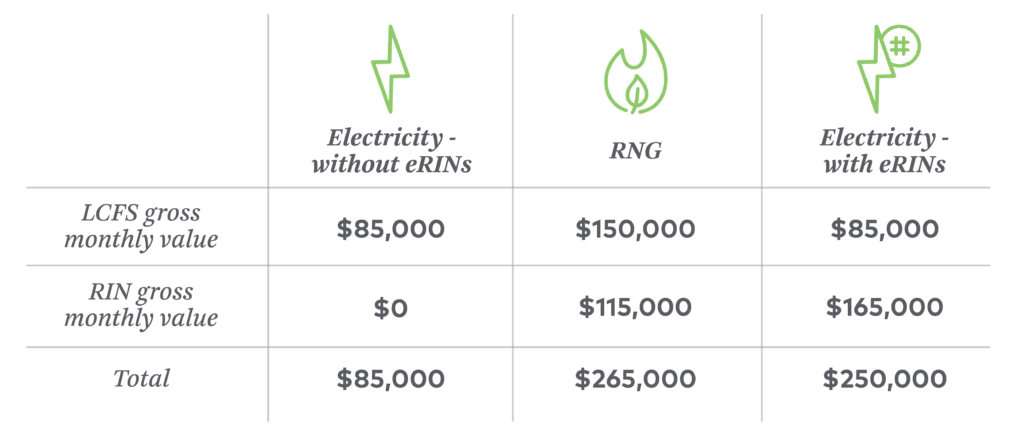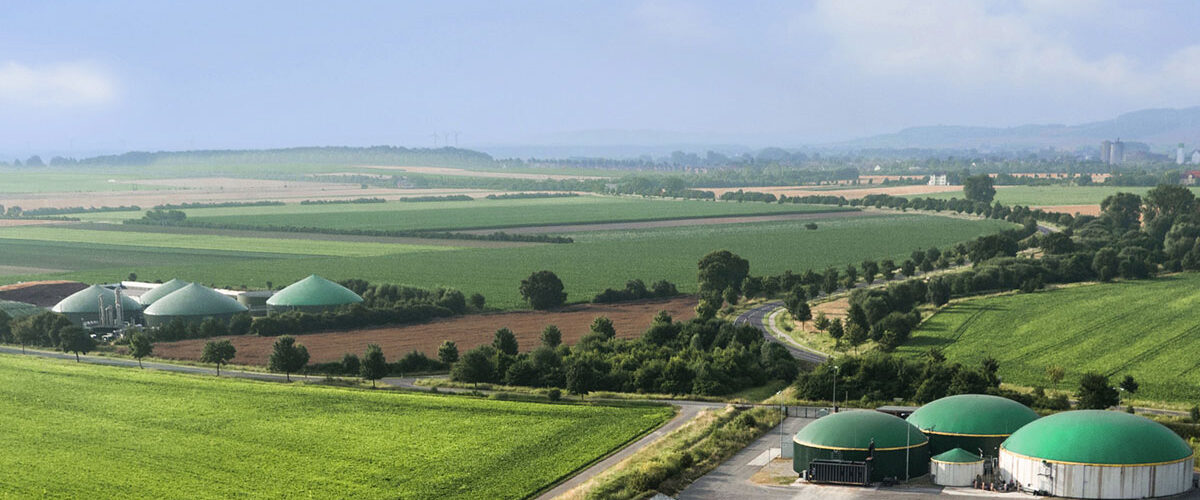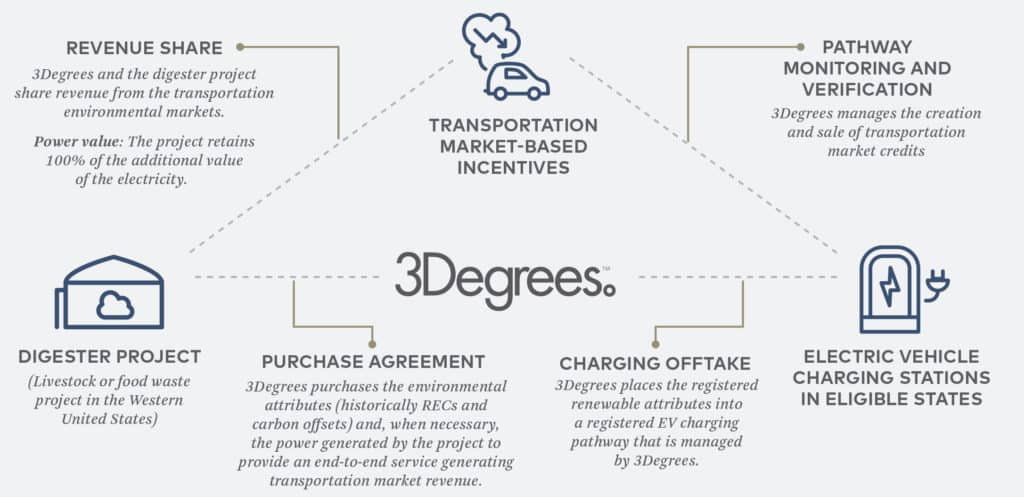Incentives to decarbonize transportation fuels from “clean fuels standards” like California’s Low Carbon Fuel Standard (LCFS) and Oregon’s Clean Fuels Program have transformed the livestock digester industry. The number of livestock digesters doubled last year, and is set to double again based on the number of projects that are planned or under construction, according to estimates from the Coalition for Renewable Natural Gas. The Wall Street Journal and others have dubbed this a gold rush for private capital to build new projects.
To date, the rush has focused on livestock digesters making renewable natural gas to fuel compressed natural gas vehicles. More quietly, clean fuels standards have introduced rules for how to fuel electric vehicles (EVs) with renewable electricity–including electricity (not gas!) from livestock and food waste digesters, which are credited for the same avoided methane emissions as renewable natural gas projects. Under these clean fuels standards, electricity-generating livestock digesters can generate up to $500/MWh for the environmental attributes (not including the value of the electricity). The actual value for facilities highly depends upon the final carbon intensity of a project, and most facilities fall into a range of $150 to $400 per MWh, depending on their avoided methane emissions.
Electricity generating projects are taking advantage of this incentive. 3Degrees alone is currently working with five biogas to electricity projects, with more under development. This incentive can be a lifeline for livestock digesters aging off their original power purchase agreement, which were often subsidized at high prices, that are unable to cover their operating costs at the lower avoided cost rates. 3Degrees recently pre-purchased clean fuels standard credits to repower one of these projects.
Factors currently limiting electricity development are set to change
The gold rush seen in renewable natural gas hasn’t yet hit livestock digesters making electricity at the same scale. Two primary factors have limited this development:
- RINs. Renewable Identification Numbers under the federal Renewable Fuel Standard have been another essential incentive, stacked on top of the clean fuels standard credits, to promote renewable natural gas digester development. While RINs from electricity or “eRINs” have been written into the Renewable Fuel Standard legislation, EPA has not been approving eRIN pathways. The EPA is clear this is changing. While the date keeps getting pushed out, the industry now expects EPA to release rules for eRIN generation in November this year. Two major sources of uncertainty remain – how the introduction of eRINs will affect overall RIN pricing and whether or not EPA will integrate critical “energy economy ratio” calculations into the overall calculation of eRINs that recognize the increased efficiency of using electricity for transportation.
Table: eRINs have the potential to put the environmental attributes from electricity projects on par with RNG. This is indicative of an environmental attribute value of a swine digester making 400 MWh or 3,600 MMBTU per month, for example. The “with eRINs” scenario assumes an energy economy ratio, similar to the LCFS, is applied to the RIN calculation and RIN pricing remains stable despite the introduction of significant new RIN supply. Both of these assumptions have significant uncertainty, and the RIN value could fall significantly. All scenarios use current LCFS and RIN pricing.
While eRINs have the potential to put the value of environmental attributes from electricity projects on par with RNG, there are many reasons to implement electricity projects even if the gross attribute value is lower. Electricity projects, in particular for smaller projects far from natural gas pipelines, have significantly lower capital costs because they do not require the same gas clean up and new pipeline construction. In addition, downstream fueling with compressed natural gas will not grow at the same rate as electric fueling; electricity will clearly power the light and medium duty vehicles in the future, so there will be more than sufficient EV charging for digester projects to supply. - Geography. Given current rules in clean fuels standards, only projects in the Western United States are able to wheel power to the required balancing authorities to match with EV charging in Oregon or California. As clean fuels standards proliferate across the United States, opportunities will open for projects throughout the United States.
How It Works
3Degrees provides an end-to-end service to generate revenue from transportation market-based incentives for digester projects by:
- Assessing the potential carbon intensity and incentive value of each facility and mapping prospective transmission paths for wheeling power;
- Matching electricity to electric vehicle charging in eligible states, including wheeling power when necessary;
- Ensuring proper contracting to meet the evolving requirements of each states’ transportation incentive markets;
- Managing the registration, monitoring, and verification of the pathway needed to generate credits;
- Preparing pathways and contracts for facilities to generate additional revenue under the federal Renewable Fuel Standard by generating eRINs; and
- Generating and monetizing transportation market-based incentives and managing all payments to digester facilities.
To understand how to capitalize on this growth opportunity and learn more about our deep expertise in avoiding methane emissions under compliance climate programs, please contact us today.



